

There are four types of sentences in the English language, and all of them accomplish different things.
If you want to be a successful writer, you’ll need to understand how to use each one.
One of these types is the interrogative sentence. What is an interrogative sentence? The short answer is that an interrogative sentence is a sentence that asks a direct question and ends with a question mark.
This article will explain what an interrogative sentence is and teach you how to construct one correctly.
An interrogative sentence is basically another word for a question. Every interrogative sentence ends with a question mark and asks some kind of direct question.
Interrogative sentences are aptly named because their purpose is to interrogate.
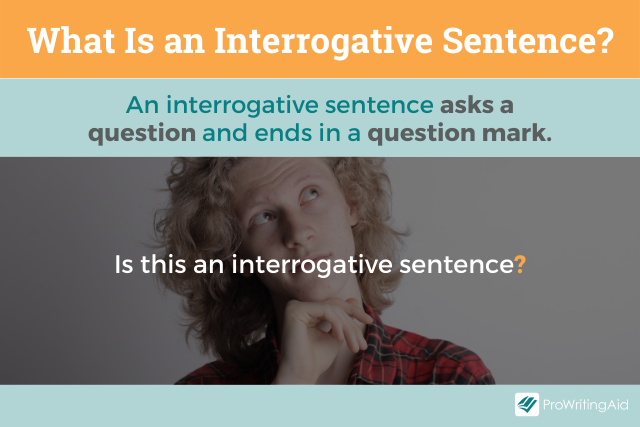
Here are some examples of interrogative sentences:
Interrogative sentences are one of four types of sentences in the English language.
The other three types of sentences are declarative, exclamatory, and imperative sentences.
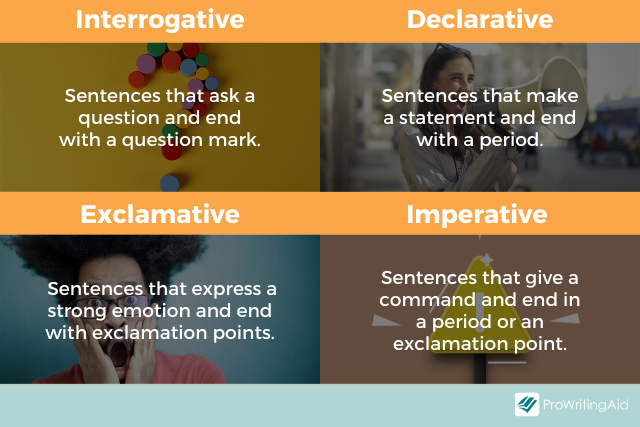
Declarative sentences make a statement and end with a period.
Examples of declarative sentences:
Exclamatory sentences express a strong emotion—surprise, joy, or anger, for example—and end with exclamation points.
Examples of exclamatory sentences:
Imperative sentences give a command, and end with either a period or an exclamation point.
Examples of imperative sentences:
If a sentence makes a statement, expresses a powerful emotion, or gives a command, you know it’s not an interrogative sentence.
More importantly, interrogative sentences are the only type of sentence that end in a question mark, which makes them easy to recognize.
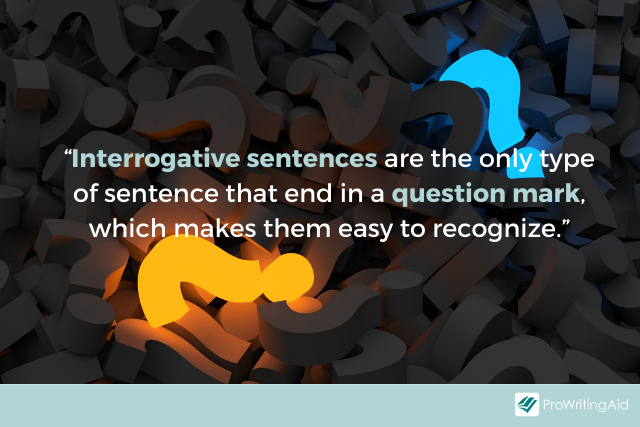
There are three different types of direct questions. An interrogative sentence can ask any of these three types of questions:
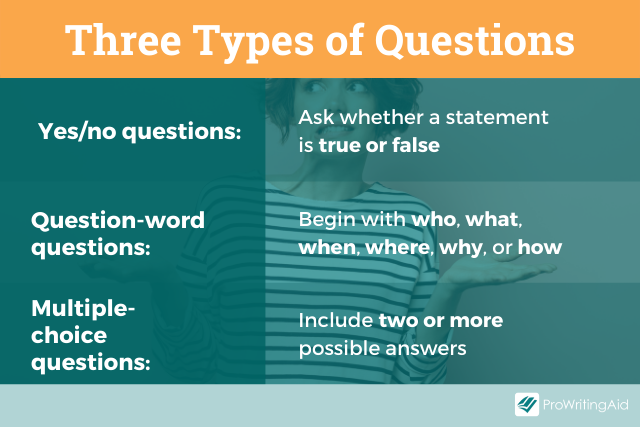
Let’s take a closer look at each type of question.
Some questions have answers that take the form of “yes” or “no.” Essentially, these questions ask whether a statement is true or false.
Examples of yes/no questions:
Some questions begin with a question word.
Question words are who, what, when, where, why and how. The answer takes the form of a declarative sentence.
Examples of “question word” sentences:
Multiple-choice questions include two or more possible answers within the question itself.
There’s no limit to the number of choices you can include in a multiple-choice question.
Examples of multiple-choice questions:
All sentences must contain a subject and a verb. These are the two fundamental components of every sentence. Even more important, regardless of the type of sentence, there must be accurate subject–verb agreement. So, if a subject is singular, its verb must also be singular; if a subject is plural, its verb must also be plural.
It's easy to make mistakes with subject–verb agreement but ProWritingAid has your back. Its grammar report checks for thousands of mistakes, including incorrect subject–verb agreement.

In an interrogative sentence, the verb usually comes before the subject. This contrasts with the way most other types of sentences are formed, where the subject comes after the verb.
You can invert the subject and verb of a declarative sentence and then add a question mark at the end to turn it into an interrogative sentence. For example:
Sometimes you might use two verbs: one main verb and one auxiliary verb. An auxiliary verb is used to help express the main verb.
The most common auxiliary verbs are “to be,” “to have,” and “to do.”
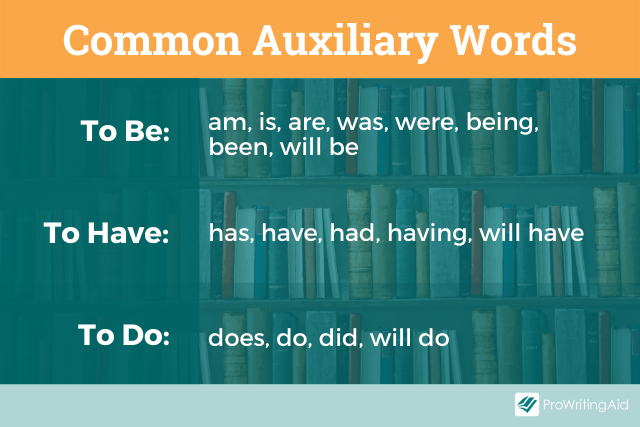
In this case, “do” is the auxiliary verb and “love” is the main verb.
The exact sentence structure of an interrogative sentence depends on which of the three categories the question falls into. Let’s take a closer look at how you construct each type of question.
To construct a yes/no question, use the following sentence structure:
Auxiliary verb + subject + main verb + remainder
Here’s an example of the construction of a yes/no question:
“Will you stay for dinner?”

To construct a “question word” question, use the following sentence structure:
Question word + auxiliary verb + subject + main verb + remainder
Here’s an example of the construction of a “question word” question:
“Where did she go last night?”
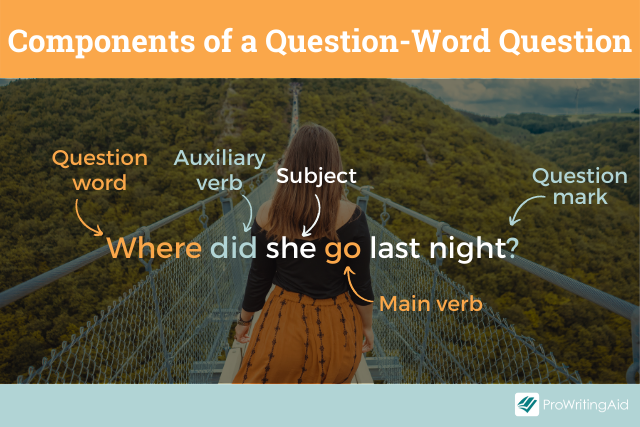
To construct a multiple-choice question, use the following sentence structure:
Auxiliary verb + subject + main verb + choice 1 + “or” + choice 2
If there are more than two choices, you can separate them all with commas and simply add an “or” before the final choice.
Here’s an example of the construction of a multiple-choice question:
“Should we study at the library or at my house?”
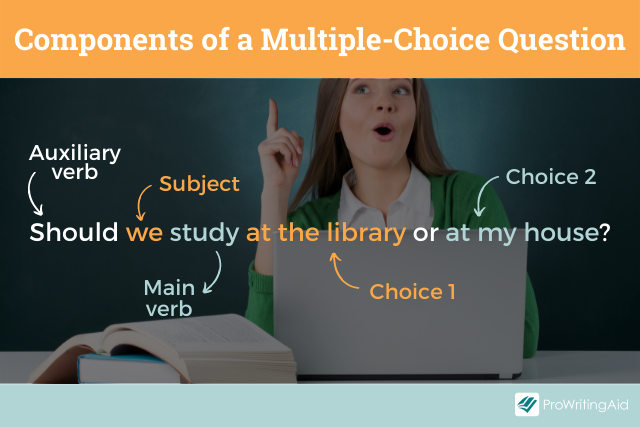
Let’s take a look at some examples of interrogative sentences from successful books.
Notice how every sentence ends in a question mark. See if you can figure out whether these questions are yes/no questions, “question word” questions, or multiple-choice questions.
Now you know how to identify and construct interrogative sentences.
Was this article helpful? Let us know in the comments.


Check every email, essay, or story for grammar mistakes. Fix them before you press send.